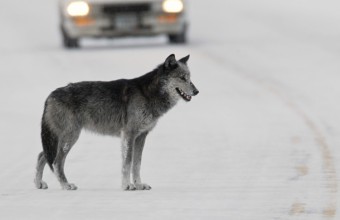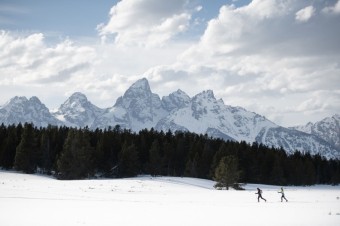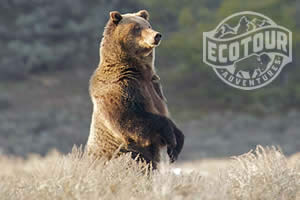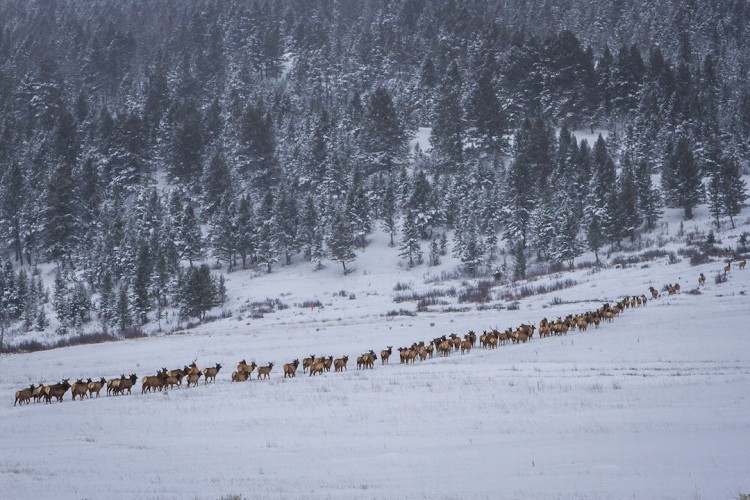
The wind howls and blasts our faces with particles of frozen snow. We watch as the elk herd, ears back and eyes squinting, walks across the meadow. “They’re trailing” I explain, “the herd walks single file to conserve energy as they move through the snow.” The elk reach dark timber, finding a small bit of refuge. But it’s only January, and we more than three months of winter to go. We depart to look for other wildlife as my guests sip hot coffee, cozy in our warm Ecotour Adventures safari vehicle.
We’re visiting the National Elk Refuge, critical winter habitat first protected in 1912. By the early 1900’s, elk and most other herds of big game had been decimated out across the much of United States, a product of unregulated hunting and habitat loss. Alarmed, conservationists took action, setting up regulations which would protect remaining herds and the habitat they needed to thrive.
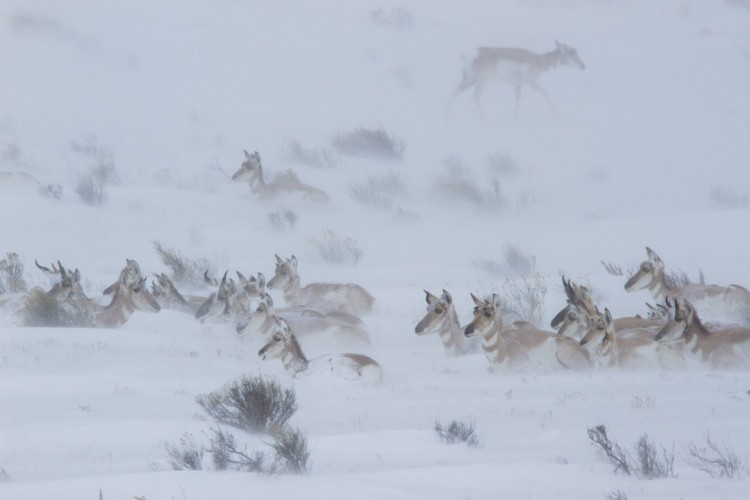
The refuge is one such area which set aside land specifically for wildlife. Other than the short dirt road we’re now traveling along the southern end of the park the vast majority of the refuge is closed to human access for most of the year.
Surviving Winter
For many human residents and visitors of Jackson Hole, winter means adventure. Skiers flock to the slopes of Jackson Hole Mountain Resort, or ascend the peaks in Grand Teton National Park. Below the mountains cross country skiers and snowshoers head out to explore the Jackson Hole Valley. Snowmobiles carry visitors to Old Faithful in Yellowstone. At the end of the day everyone returns to comfortable lodging and rich food, insulated from winter’s grasp until we choose to go back out into it.
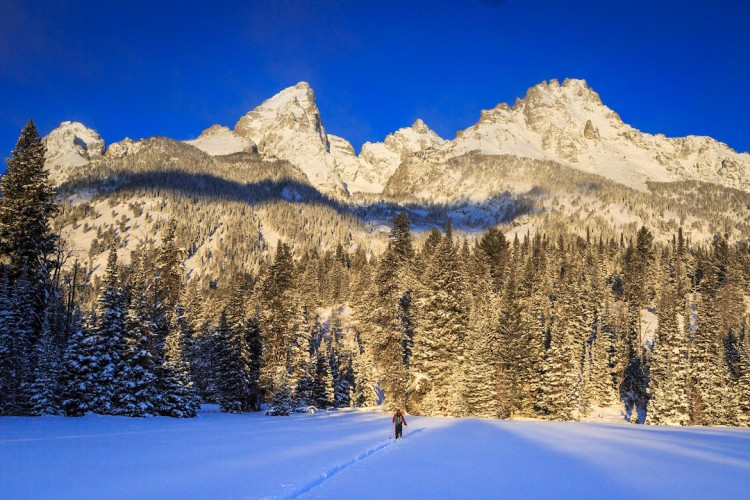
The tall peaks of the Teton Mountain Range offer world class ski resort and backcountry skiing opportunities just minutes from Jackson, WY. @jacksonholeecotours @joshmettenphoto
It’s a far contrast from the lives of our wild winter residents who are out in the snow, all day every day. Most have also migrated to better habitat for the winter, areas which offer shelter from cold temperatures, extreme terrain, deep snow, and some forage. Here they will rely on fat deposits (up to 50lbs of pure fat in elk!) to supplement the limited forage available, waiting out winter. Amazingly, females will also carry full term pregnancies during this time, preparing to bring the next generation into the world in spring.
Protecting Winter Wildlife Habitat
Habitat Protection Areas, (also known as winter wildlife closures) abound in the Jackson Hole Valley in winter, evidence of a commitment to conserving our irreplaceable wildlife by visitors and locals alike. Most are found in the Jackson Hole Valley, places like the Snake River bottom in Grand Teton National Park, and the open hillsides above the town of Jackson. These areas provide refuge for tens of thousands of wintering elk, mule deer, moose, bighorn sheep, and bison, now concentrated in the Jackson Hole Valley in greater numbers than any other time of year.
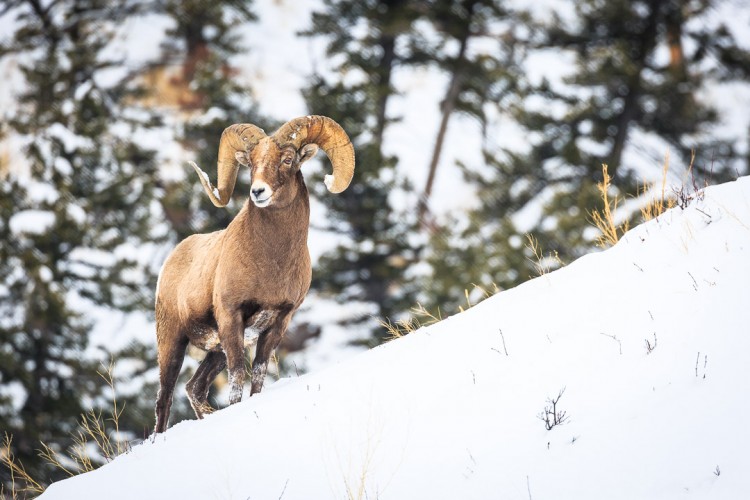
Though hundreds of bighorn sheep migrate from high elevations to the Jackson Hole Valley each year, the Teton herd remains high atop peaks in Grand Teton National Park for the winter. @jacksonholeecotours @joshmettenphoto
Others are found high in the Teton Range, windswept mountaintops including the summits of Mount Hunt, Static Peak, and Prospector Mountain. Winter recreation here is closed through April 30th to protect winter habitat for a small remnant population of bighorn sheep enduring rugged conditions. In the past, habitats like these ones remained protected by default, very few humans had any interest in venturing into these extreme winter environments. It’s a strategy that’s worked for centuries, but is now showing signs of strain.
Stewarding the Greater Yellowstone Ecosystems Irreplaceable Wildlife
As the popularity of winter recreation continues to expand across the Greater Yellowstone Ecosystem it is up to us to recreate responsibly. That's why Jackson Hole EcoTour Adventures is a proud fiscal sponsor of the Don't Poach the Powder Campaign, which seeks to educate the public on protecting wintering wildlife.
Fortunately it isn’t very hard to help our wild neighbors. By staying out of established Habitat Protection Areas we avoid stressing animals, helping them conserve those critical fat reserves they are relying on through late April. These areas represent a small fraction of the overall terrain available to human recreationists, a small sacrifice for the future of the GYE.
You can learn more about habitat protection areas here, thanks to our friends the Greater Yellowstone Coalition for assisting with this post.
Josh Metten is a Senior Naturalist with Jackson Hole Ecotour Adventures with nearly a decade of experience guiding and sharing stories of the Greater Yellowstone Ecosystem.
Now in our 12th year of operation, Jackson Hole Ecotour Adventures leads half day, full day, and multi day wildlife, cross country ski, and snowshoe tours in Grand Teton and Yellowstone National Parks 365 days a year. Let us help maximize your Jackson Hole Experience Today! www.jhecotouradventures.com 307-690-9533 or info@jhecotouradventures.com


